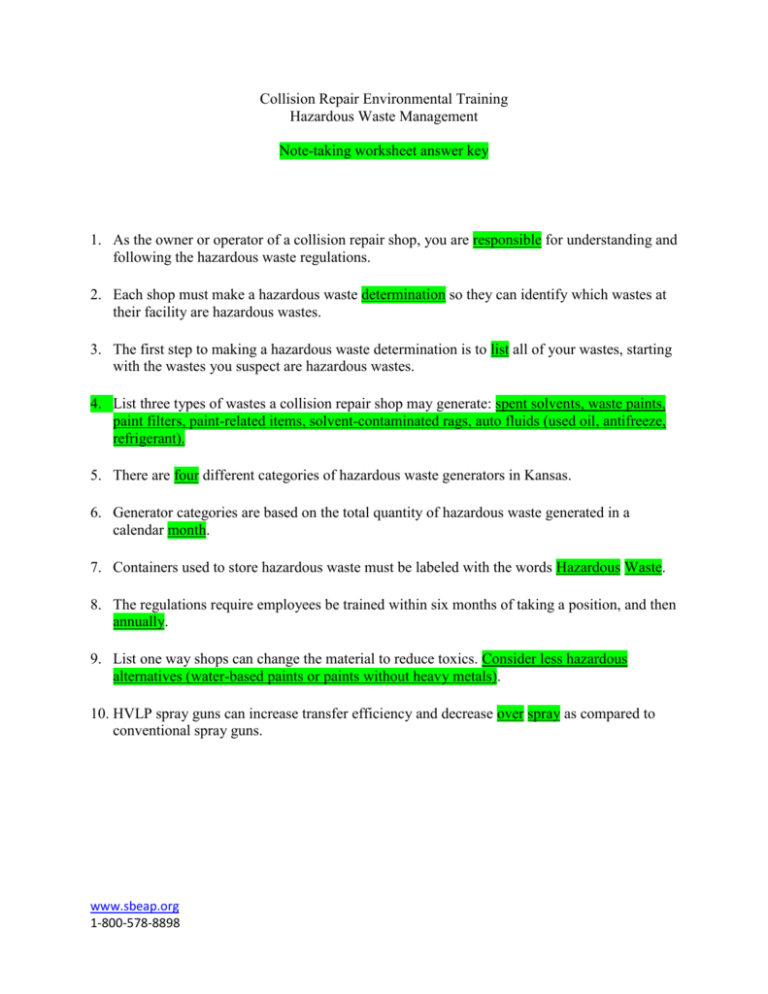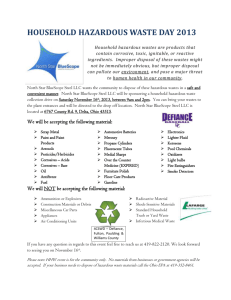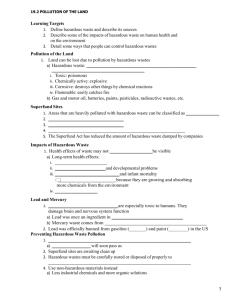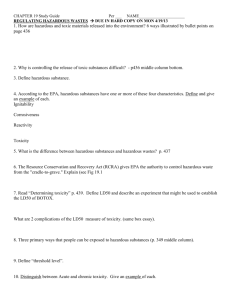HW student notes sheet (answer key)
advertisement

Collision Repair Environmental Training Hazardous Waste Management Note-taking worksheet answer key 1. As the owner or operator of a collision repair shop, you are responsible for understanding and following the hazardous waste regulations. 2. Each shop must make a hazardous waste determination so they can identify which wastes at their facility are hazardous wastes. 3. The first step to making a hazardous waste determination is to list all of your wastes, starting with the wastes you suspect are hazardous wastes. 4. List three types of wastes a collision repair shop may generate: spent solvents, waste paints, paint filters, paint-related items, solvent-contaminated rags, auto fluids (used oil, antifreeze, refrigerant). 5. There are four different categories of hazardous waste generators in Kansas. 6. Generator categories are based on the total quantity of hazardous waste generated in a calendar month. 7. Containers used to store hazardous waste must be labeled with the words Hazardous Waste. 8. The regulations require employees be trained within six months of taking a position, and then annually. 9. List one way shops can change the material to reduce toxics. Consider less hazardous alternatives (water-based paints or paints without heavy metals). 10. HVLP spray guns can increase transfer efficiency and decrease over spray as compared to conventional spray guns. www.sbeap.org 1-800-578-8898









